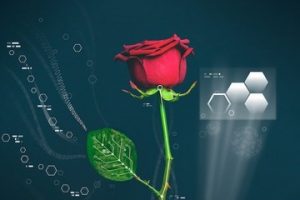 That living processes in plants and animals involve electricity has been known for almost two centuries. Around 1900, the biologist J.C. Bose researched how living tissues generate electricity. He went as far as to propose that the flow of electricity in plant tissues mimicked that of animal nerve cells. Perhaps, as a result, plants could feel pain and emotions. The concept of life being closely related to electricity was also explored in Mary Shelley’s Frankenstein, where the monster is animated by lightning bolts. Plants generate electrical energy, much of it through photosynthesis. Those currents flow in the plant cells. Is there a way to harvest that energy so as to charge small devices?
That living processes in plants and animals involve electricity has been known for almost two centuries. Around 1900, the biologist J.C. Bose researched how living tissues generate electricity. He went as far as to propose that the flow of electricity in plant tissues mimicked that of animal nerve cells. Perhaps, as a result, plants could feel pain and emotions. The concept of life being closely related to electricity was also explored in Mary Shelley’s Frankenstein, where the monster is animated by lightning bolts. Plants generate electrical energy, much of it through photosynthesis. Those currents flow in the plant cells. Is there a way to harvest that energy so as to charge small devices?
Eleni Stavrinidou and other researchers of the Laboratory of Organic Electronics (LOE) in Sweden recently demonstrated the viability of using a rose as a storage device. Their paper, published recently in Science Advances describes how they successfully inserted a polymer into the xylem cells, to create conducting material while still allowing the free flow of enzymes and minerals in the rose stem. Stavrinidou was able to thus create a transistor device that converted small ionic signals into electric currents.
The authors describe the potential of their work.
With integrated and distributed electronics in plants, one can envisage a range of applications including precision recording and regulation of physiology, energy harvesting from photosynthesis, and alternatives to genetic modification for plant optimization.
Stravrinidou added that the plant acts as a supercapacitor, that can be charged hundreds of times without losing its performance. Why a rose? The researchers chose it because of the woody xylem cells in its stem. However, there is no reason why trees could also not be used as sources of electrical energy. Or an entire forest.
PMK
